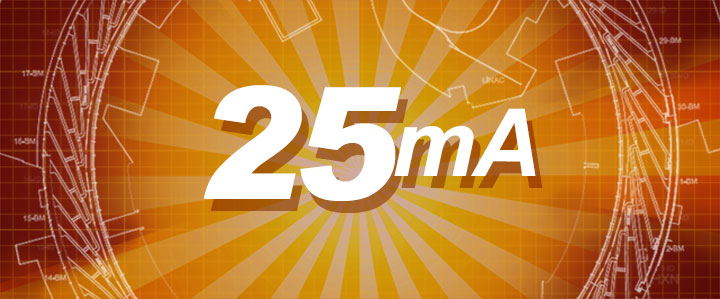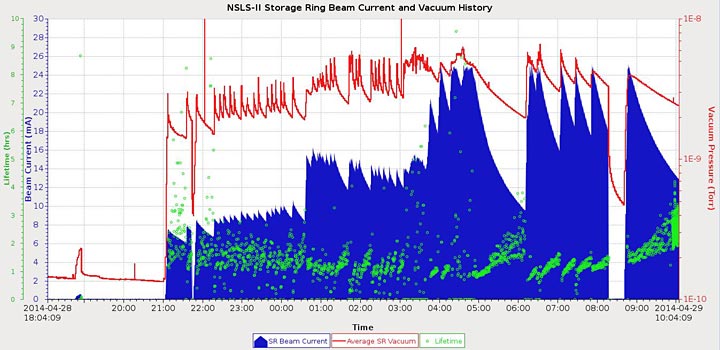NSLS-II Stores 25 Milliamps of Current
April 30, 2014

Early on April 29, 2014, the National Synchrotron Light Source II (NSLS-II) at the U.S. Department of Energy’s Brookhaven National Laboratory stored 25 milliamps (mA) of current at 3 billion electron volts using a room-temperature radio-frequency (RF) cavity. This achievement is a key performance milestone and comes more than nine weeks ahead of schedule for the NSLS-II construction project. The project team is now planning to push ahead with installation of the superconducting RF cavity and additional insertion devices.
"This achievement was made possible by the hard work of our staff, the Laboratory, the Department of Energy, and our many colleagues who have helped to shepherd the project to this milestone," said Steve Dierker, Associate Laboratory Director for Photon Sciences. "Together we are looking forward to completion of the project and an exciting science program for our user community."
 enlarge
enlarge
Graph of NSLS-II storage-ring beam current (blue) peaking repeatedly at 25 mA between 4 and 9 a.m. on April 29, 2014
When completed, NSLS-II will be a state-of-the-art, medium-energy electron storage ring that produces x-rays up to 10,000 times brighter than the original NSLS, which started operating at Brookhaven Lab in 1982 and is shutting down at the end of September 2014.
NSLS-II construction began in 2009, with a $912-million budget from the U.S. Department of Energy Office of Science. Construction has passed through distinct phases, starting with conventional construction of the ring building and laboratory-office buildings; installation of the accelerator and beamlines; now commissioning of the injection system, which consists of a linear accelerator, the booster, transport lines and a storage ring (see earlier article on storage-ring commissioning); followed by commissioning of an initial suite of beamlines for early science.
DOE’s Office of Science is the single largest supporter of basic research in the physical sciences in the United States, and is working to address some of the most pressing challenges of our time. For more information, please visit science.energy.gov.
2014-4845 | INT/EXT | Newsroom









